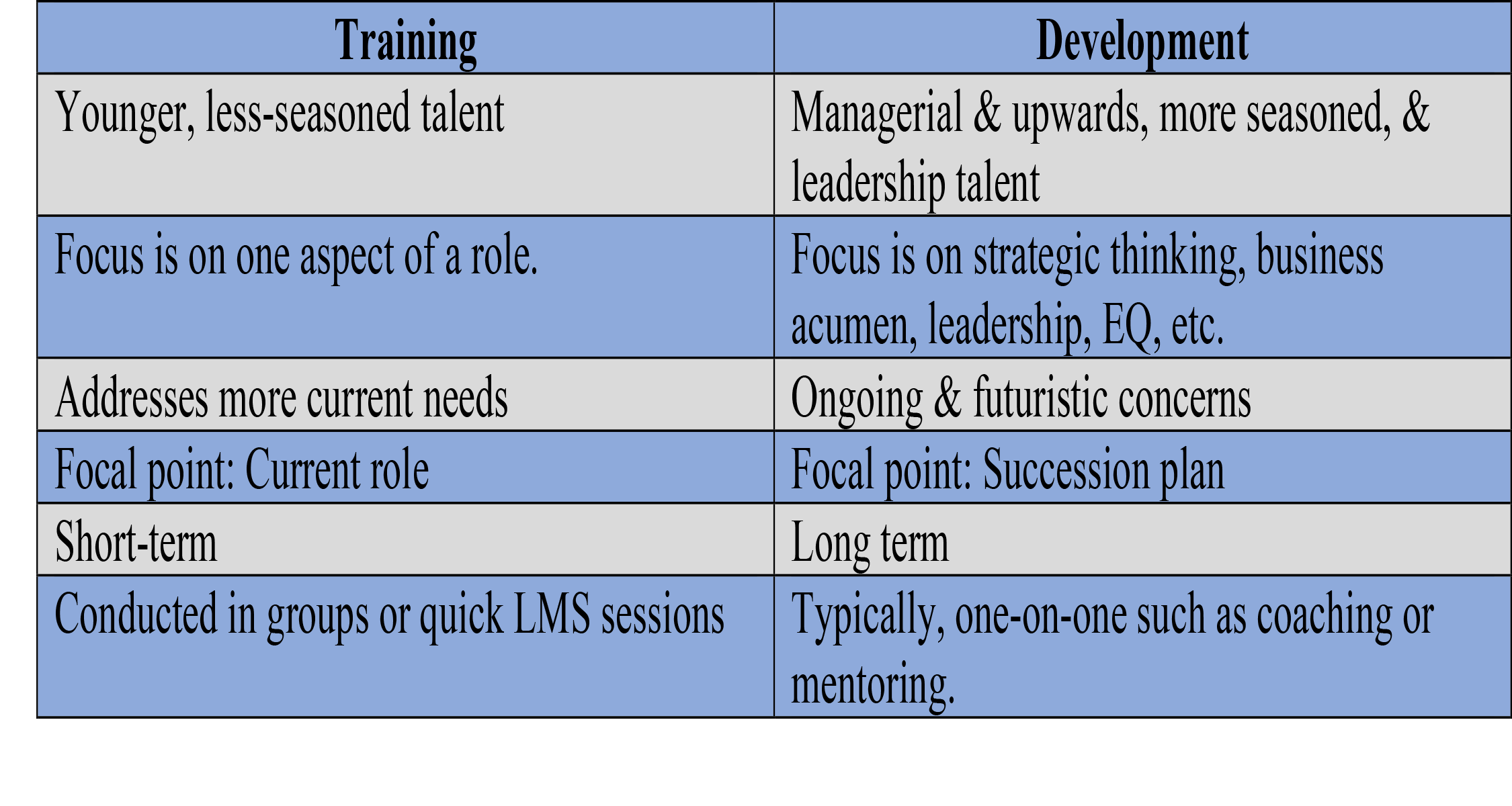The Difference Between Training & Development
 Using “the little gray cells” is an expression the legendary detective Hercule Poirot, created by Agatha Christie, was often fond of using. A more “modern” example of this comes from management consultant, the late Peter Drucker, “We now accept the fact that learning is a lifelong process…” So, if we know that we should keep “the little gray cells” active and that learning is important, what difference does it make whether that learning comes via training or development?
Using “the little gray cells” is an expression the legendary detective Hercule Poirot, created by Agatha Christie, was often fond of using. A more “modern” example of this comes from management consultant, the late Peter Drucker, “We now accept the fact that learning is a lifelong process…” So, if we know that we should keep “the little gray cells” active and that learning is important, what difference does it make whether that learning comes via training or development?
Both Learning and Development are Impactful
According to The Learning Edge there is even a difference between learning and training. With apologies to the editor, that is too finite a hair for this blog to split. In another vein, according to an article by Dr. K.C. Garbe of The Journal of Active Aging suggests that development can positively impact both our personal and professional lives. Dr. Garbe goes on to posit that organizations can benefit from employee development as well. However, the difference between training and development is in the application of each of these valuable tools.

The Application
Applying training and development in your organization, we can agree, are critical components to organizational growth. The chart below, will help discern the difference in the appl
ication of each of these tools.
Some sources suggest that training is typically an assignment given to talent by a manager and that at the leadership level the individual seeks out his or her own development. On a broader spectrum this is true. However, as a leader, if you have a high potential talent at just below or at the supervisory level, would it be worth the investment to offer some type of development component? Going up the ladder, even executives have blind spots. I’ve had CEOs call me and say, “You are either going to coach this person, or I’m going to fire them!” What’s the point? Keep an open mind about both training and development and applying it to your talent at all levels of the organization.
The Strategy of Training and Development
Are there times when training can be strategic? Yes, as in the case above when identifying a high potential talent at or beneath the supervisory level. Considering succession planning within your own department can prove to be a strategic move even for your own career.
However, typically we think of development as the more strategic initiative. This is because development typically entails higher level business components. New or less seasoned talent are far less apt to have well-developed business acumen under their command as someone who has been in the business world for 15, 20 or 30 years. Before that time, talent simply has not had the exposure to making difficult or impactful decisions regarding products, business strategies, or major change. Further, offering training and development can prove to be a magnet for attracting high performing talent.
The Hiring Case for Training and Development
Attracting top talent means making your organization attractive. Top talent, even non-seasoned talent that wants to get ahead looks for organizations that offer training. You can train almost anyone to do almost anything. What you might have more difficulty with are people who have poor attitudes, who feel they deserve a promotion after six months, or who have poor work ethics.
Development holds true for more seasoned talent. While they know how to do their jobs, any top performer has a competitive nature, a desire to excel, be successful, and reach for that next career goal. If development is not in your offerings, then you will miss out on adding top performers to your team.
Your Training and Development Program
The question is not whether your organization needs a training and development program. Indeed, it does, and paying equal attention to both in today’s ever-changing business environment is essential. Therefore, both your training and development must have some strategic elements, or you will be wasting resources.
Ensure that you operate your training and development programs like any other business unit. Conduct periodic SWOTs, include valuable components such as
- Initial Skills Training
- Job Maintenance Training
- Up-Skilling Training
- Employee Development
Give your training & development unit a budget and make sure there are measurements in place to determine ROI; and please to keep the little gray cells working.
Thank you for reading this blog. If you would like more information on talent development, Let’s Get Started.
Graphic Credit: BigStock.com